How to Identify House Plants That Are Safe For Cats
Finding house plants that are safe for cats is important to keep your fur babies safe. While some cats may naturally avoid certain toxic plants, this behavior is not typical among all cats. Some toxic plants for cats, like lilies, are highly attractive to cats due to their scent and texture, even though they’re severely toxic. As a cat owner, you can safely add greenery to your home by taking the right precautions. This includes understanding what makes some plants harmful to cats, recognizing toxic plants, and selecting safe alternatives.
What Makes Plants Toxic to Cats?
Some plants contain compounds that are harmless to humans but toxic to cats. These substances can cause your cats to have an upset stomach or serious health complications. Your cat doesn’t even need to eat the plant to be affected by its toxic properties. Many toxic plants can harm cats through simple contact.
Common toxic components in plants include:
Found in plants like pothos and philodendrons, these sharp crystals can irritate a cat’s mouth and throat, leading to drooling, vomiting, or swelling.
These chemicals can cause gastrointestinal distress and lethargy and are found in aloe vera and snake plants.
Found in lilies and tulips, alkaloids can affect a cat’s heart or nervous system, sometimes fatally.
10 Toxic Plants for Cats Homeowners Should Avoid
When creating a safe environment for your feline friends, it’s essential to be aware of common toxic plants for cats. Many common houseplants contain substances that are harmful or even fatal to cats. You have an idea of which plants are safe for your cats, but here are the ones you should avoid having.
Toxic Plants for Cats to Avoid
-
- Lilies (Lilium spp.): Extremely toxic to cats, even a small amount can cause kidney failure.
- Pothos (Epipremnum aureum): Also known as Devil’s Ivy, its calcium oxalate crystals can irritate a cat’s mouth and throat.
- Snake Plant (Sansevieria trifasciata): Contains saponins, which cause nausea, vomiting, and diarrhea in cats.
- Sago Palm (Cycas revoluta): Highly toxic, ingestion can lead to liver failure and death.
- Aloe Vera (Aloe barbadensis miller): Contains aloin, which can cause digestive upset if ingested.
- Philodendron (Philodendron spp.): Its calcium oxalate crystals can cause severe oral irritation, drooling, and swelling.
- English Ivy (Hedera helix): Can cause drooling, vomiting, abdominal pain, and diarrhea in cats.
- Peace Lily (Spathiphyllum spp.): Contains insoluble oxalates that can cause irritation and difficulty swallowing.
- Oleander (Nerium oleander): Highly toxic, affecting the heart and potentially leading to death if consumed.
- Dumb Cane (Dieffenbachia spp.): Causes oral irritation, swelling, and difficulty breathing if chewed.
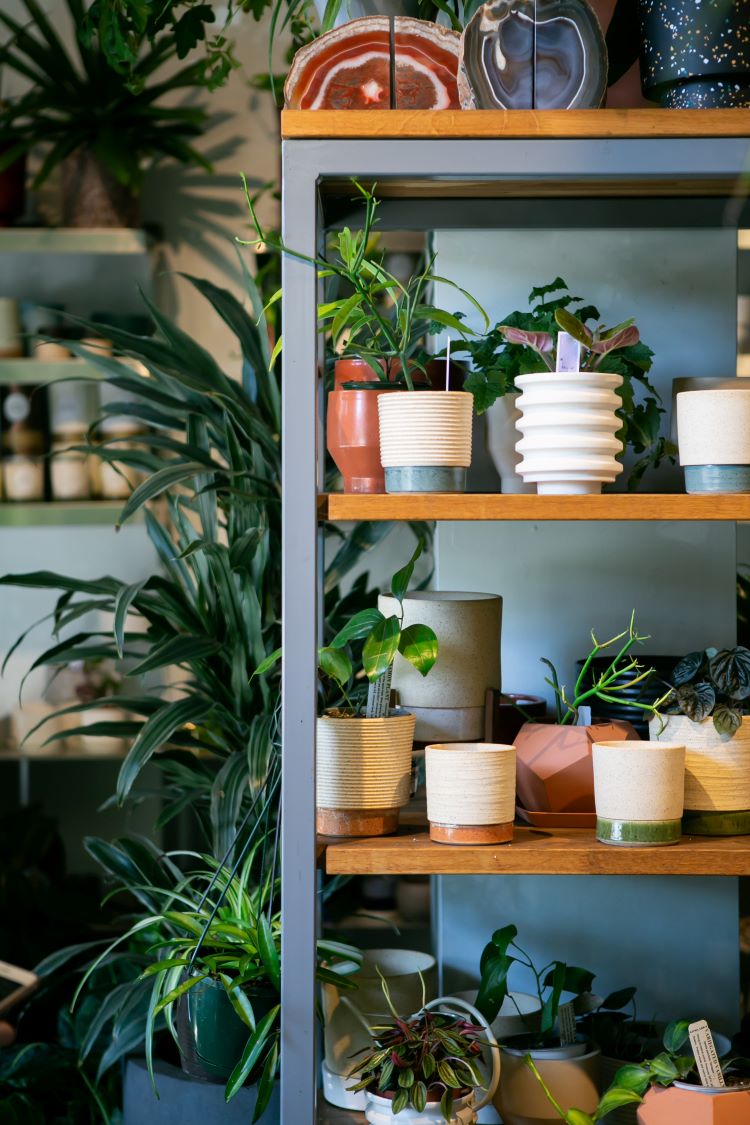
Steps to Take When Shopping for House Plants That Are Safe for Cats
When shopping for house plants that are safe for cats, keep these tips in mind:
1. Check Plant Labels
Look for tags or descriptions that say whether the plant is safe for pets. Many plant nurseries and stores now display this information for pet owners.
2. Research Before You Buy
If a plant isn’t clearly labeled, you can research its scientific name online to confirm whether it’s toxic to cats. Reliable sources like the ASPCA’s list of toxic plants for cats can help.
3. Buy Known Safe Plants
Start by only buying widely recognized house plants that are safe for cats, like spider plants, parlor palms, and Boston ferns. These are not only non-toxic but also easy to care for.
5. Avoid Popular Toxic Plants
Steer clear of commonly harmful plants like lilies, pothos, and snake plants. These plants are beautiful but pose severe risks to cats.
6. Inspect Plants
Plants with sap, sharp edges, or strong odors are usually more likely to irritate cats. All aren’t toxic, but it’s best to be safe.
10 Great House Plants That Are Safe for Cats
Adding plants to your home can improve its aesthetic appeal and improve air quality. However, for cat owners, choosing the right plants goes beyond appearance—it’s about ensuring the safety of your feline friends. Selecting house plants that are safe for cats can take a little research but it’s necessary. Take time to learn which plants are beautiful, easy to care for, and safe for cats. Here are some commonly known houseplants that are safe for cats.
1. Spider Plant (Chlorophytum comosum)
Spider plants are a well-known houseplant. They are a fast-growing, adaptable plant with arching green and white-striped leaves. These plants can add dimension in any setting and are native to Africa. They can be 1-2 ft tall in the right conditions when mature. Among plant lovers, they are also known for their air-purifying qualities. Plus, they can rapidly produce baby spiderettes for propagation or sharing with friends.
Care: Thrives in indirect sunlight but tolerates low light. Water when the top inch of soil is dry.
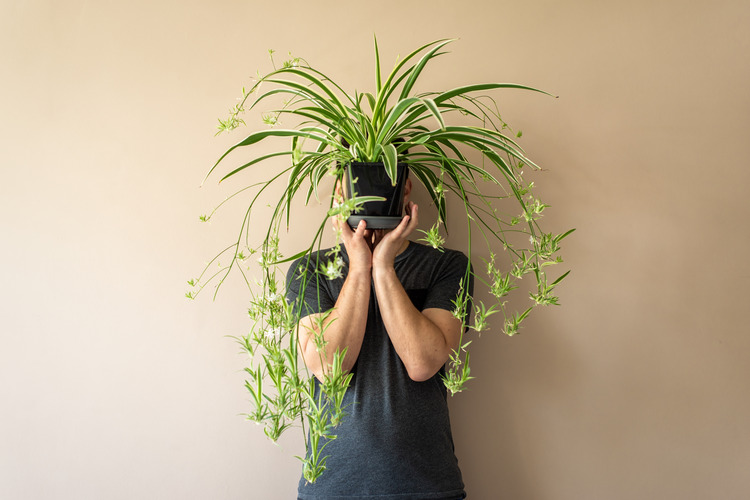
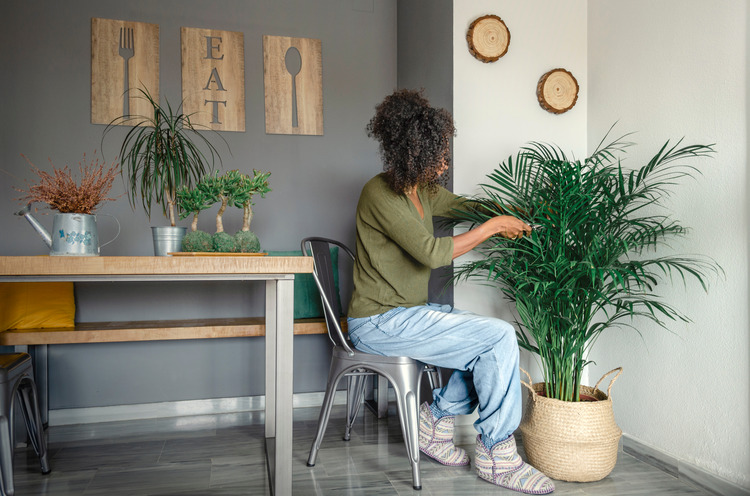
2. Areca Palm (Chrysalidocarpus lutescens)
Areca palms are native to Madagascar and are tropical plants. They can grow to be pretty tall, up to 6-7 feet indoors, and perfect for larger spaces in your home. These plants are believed to promote peace and good health, especially if you place them in your home’s east or north wing. However, These feathery fonds add a tropical vibe to any room and are another great natural air purifier.
Care: Prefers bright, indirect light and needs evenly moist soil. Avoid overwatering.
3. Calathea (Calathea sp.)
Calatheas are a group of flowing plants known for their various stripped or ribbed color leaves. There are hundreds of species of calatheas to choose from. Common ones that are safe for cats include the Prayer Plant (Maranta leuconeura) and Rose-Painted Calathea (Calathea roseopicta). The vibrant and patterned leaves of green and pink make them beloved in the plant community. Many also like that these plants have the ability to close their leaves at night (a phenomenon called nyctinasty).
Care: Prefers medium to low indirect light and high humidity. Water regularly to keep the soil moist but not soggy.
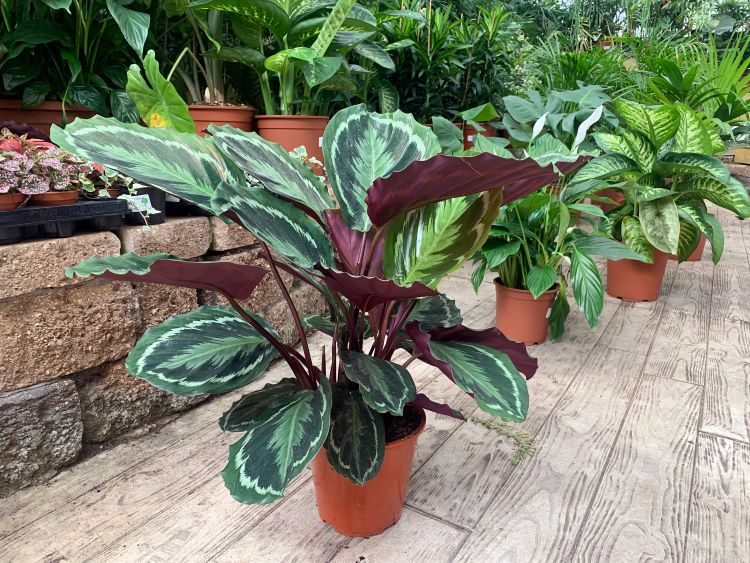
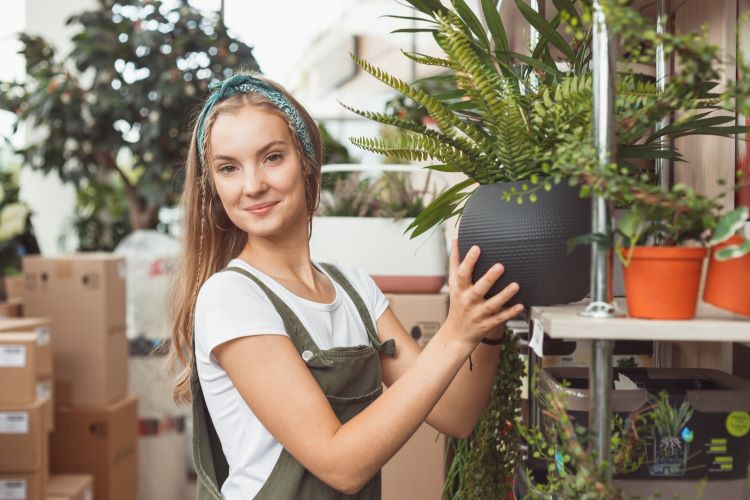
4. Boston Fern (Nephrolepis exaltata)
These ferns are native to America and are evergreen plants that maintain their green foliage throughout the year. The sword-shaped leaves on this plant have tiny leaflets. These plants are also great for hanging baskets and pedestal planters since their long, lushish leaves tend to cascade downward. As a bushier option, this houseplant safe for cats, has become a stable among people living in Florida.
Care: Thrives in indirect light and high humidity. Keep the soil consistently moist but avoid waterlogging.
5. Parlor Palm (Chamaedorea elegans)
Parlor palms are smaller palm trees that are native to southern Mexico. These plants were historically regarded as a more elegant choice dating back to the Victorian era. These plants are beloved for being hardy and thriving in low light conditions, growing up to 2-6 feet indoors. This low-maintenance plant is great for beginner plant enthusiasts.
Care: Grows best in low to medium light and requires watering when the soil feels dry.
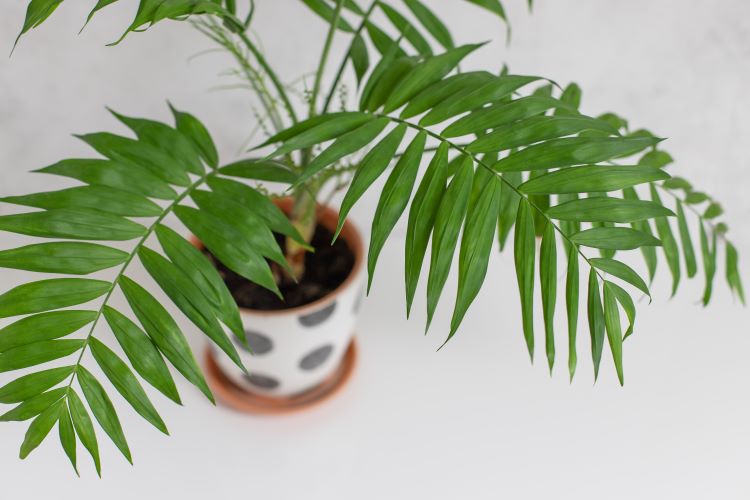
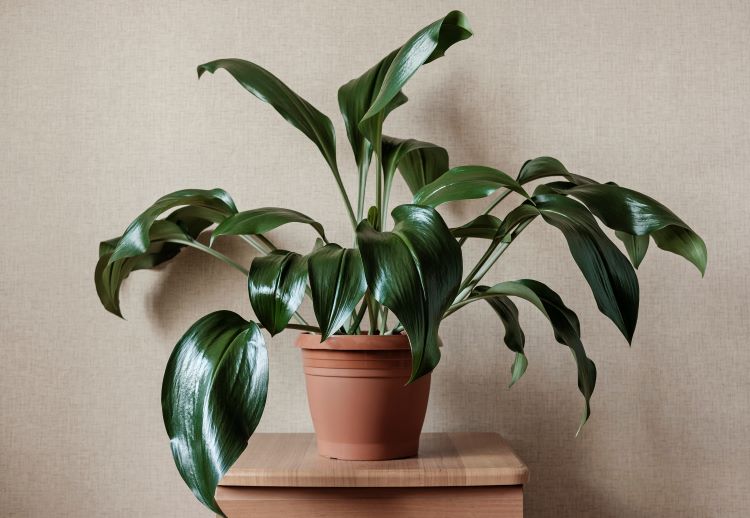
6. Cast Iron Plant (Aspidistra elatior)
This plant is native to Japan and Taiwan and has long, thick, deep green leaves. Cast iron plants are also known for being hardy and thriving in low light with minimal care. Its endurance is what won its common name, cast iron. This plant is great for beginners and busy people. However, it can be a slower grower. This requires a little more patience compared to some of the other houseplants that are safe for cats on this list. The resilience of the cast iron plant is also a symbol of strength and perseverance.
Care: Grows well in low light and tolerates inconsistent watering. Water when the soil is dry.
7. Haworthia (Haworthia spp.)
Haworthia are a group of small, slow-growing succulents with thick, spiky leaves with strips or spots. These water-retaining plants are very popular and easy to find, especially in hotter climates like Florida. It’s a great plant for small spaces around the house or at work. Plus, most people fall in love with their ‘zebra’ like lines or speckles.
Care: Requires bright, indirect light and minimal watering—perfect for neglectful plant owners.
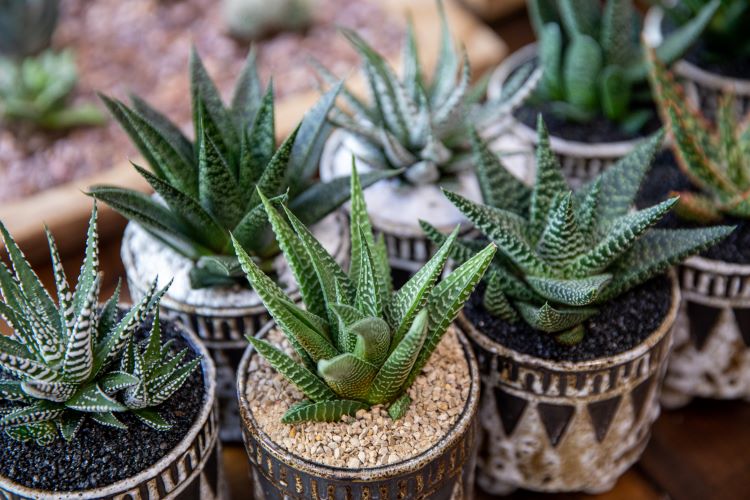
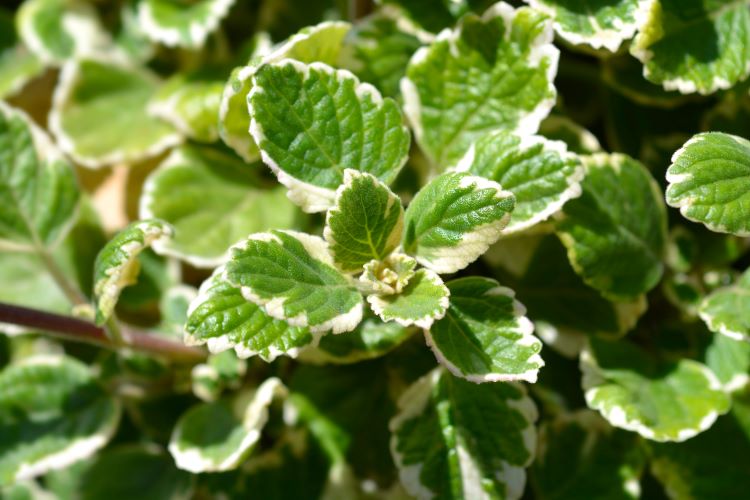
8. Swedish Ivy (Plectranthus verticillatus)
Swedish ivy is another good hanging plant option for cat lovers. These easy-to-care-for houseplants tend to get overlooked despite their pretty pedal-like glossy leaves. Swedish ivy is also very easy to propagate. While not native to Sweden, these plants are from Southern Africa and only grew in popularity in Sweden as a houseplant.
Care: Thrives in bright, indirect light and evenly moist soil. Avoid overwatering.
9. African Violets (Saintpaulia spp.)
African Violets are another low-maintenance option that is great for your first plant. These violets produce beautiful flowers with different shades of white, pink, red, blue, and purple. African violets symbolize devotion, good luck, and protection. In African folklore, people associate them with the ability to ward off witchcraft. Plus, they add a pop of color to any room.
Care: Prefers indirect light and requires consistent watering, avoiding water on the leaves.
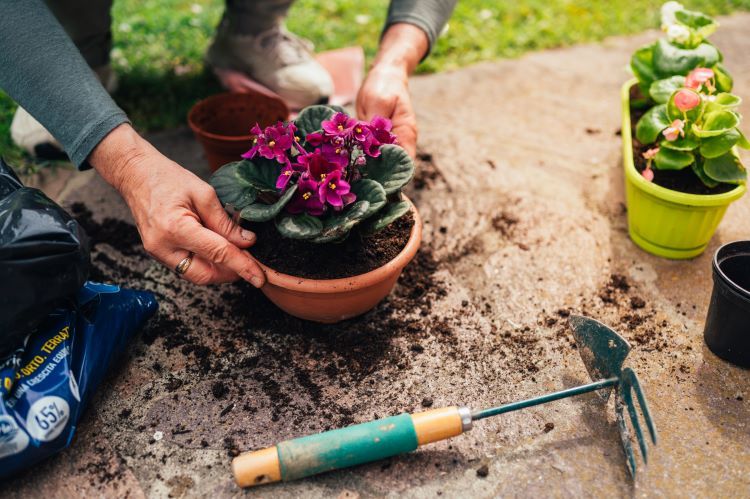

10. Pulido’s Echeveria (Echeveria pulidonis)
Pulido’s Echeveria plant is a flowering succulent from Central America. It’s a compact plant with water-retaining leaves that circle around the center to create a rose-like appearance. These plants are also eye-catching, with red or purplish edges. While being succulent, Pulido plants are drought-tolerant and easier to care for. They grow on the slower side. However, they can produce flowers that shoot out and arch over the plant, showcasing bright yellow blooms.
Care: Requires bright, indirect light and watering only when the soil is completely dry.
How to Keep Your Plants & Cats Happy
Creating a harmonious home with plants and pets requires careful consideration of your cat’s safety. Always choose house plants that are safe for cats to avoid the risks associated with toxic plants. Toxic plants for cats can cause a lot of health issues if your feline eats them or even rubs up against them. Even with safe plants, monitoring your cat’s behavior is still important. Cats may nibble on non-toxic plants, which, while not poisonous, can still cause digestive blockages or stomach upset. To keep both your plants and your cats healthy, follow this checklist:
✅ Make Proactive Plant Choices
- Always choose houseplants that are safe for cats to minimize risks.
- Remove or avoid toxic plants for cats entirely.
- Research any new plants before buying.
✅ Creating Safe Spaces
- Place plants on high shelves or in hanging baskets to limit your cat’s access.
- Use deterrents like citrus sprays, as cats dislike the smell of citrus.
- Use for plant stands or enclosed terrariums for extra protection.
✅ Interactive Alternatives
- Provide cat grass or catnip as safe options for your cat to chew on.
- Offer pet-safe toys or scratching posts to keep your cat entertained and distracted from your plants.
- Attract Birds to Your Yard by Setting up bird feeders or birdbaths outside a window to create natural entertainment for your cat.
✅ Regular Monitoring
- Check your plants for signs of chewing or digging.
- Observe your cat’s behavior around plants to spot and address potential issues early.
- Try covering your plant soil with decorative rocks or mesh to prevent your cat from digging.
Start Buying House plants that are safe for cats
Bringing greenery into your home can add to your interior design, purify the air, and create a relaxing environment. However, cat owners have to prioritize house plants that are safe for cats. Choosing houseplants that are safe for cats allows you to enjoy their benefits without putting your furry friends at risk. Avoiding toxic plants for cats—like lilies, snake plants, and pothos—is essential. Even minimal exposure can lead to severe health issues.
While adding cat-safe plants to your home, monitoring your pet’s behavior is still necessary to prevent nibbling on any plant. By following this guide and making thoughtful choices, you can create a safe, beautiful home that you will love.
Now that you’ve mastered indoor plants get some landscaping ideas and shop for outdoor plants. With cat-friendly choices indoors and out, you’ll create an environment that’s as safe as it is stunning.

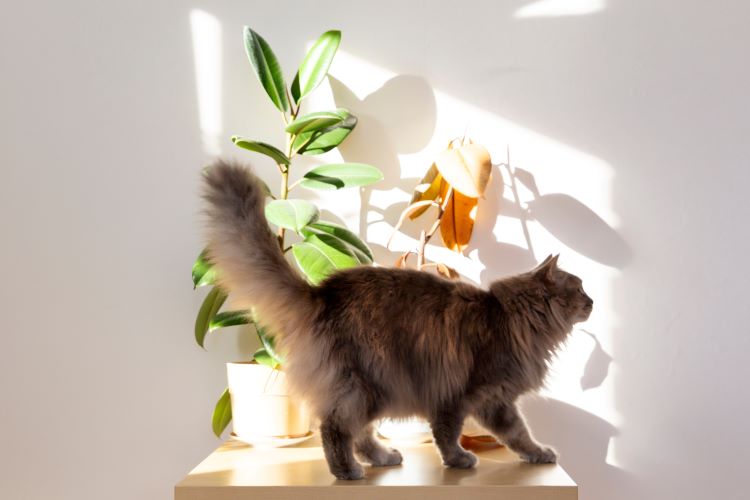
Recent Comments